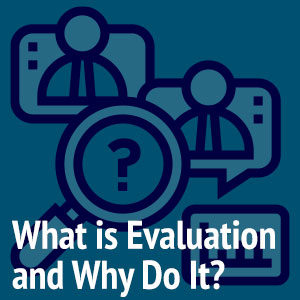 In a recent, themed issue devoted to the topic of validity in program evaluation, the journal New Directions in Evaluation (No. 142, Summer, 2014) revisited and commented on Ernest House’s influential 1980 book, Evaluating with Validity. House then argued that validity in evaluation must not just be limited to classic scientific conceptions of the valid (i.e. empirically describing things as they are), but that it must also include an expanded dimension of argumentative validity, in which an evaluation “must be true, coherent, and just.” Paying particular attention to social context, House argued that “there is more to validity than getting the facts right.” He wrote that “…the validity of an evaluation depends upon whether the evaluation is true, credible, and normatively correct.” House ultimately argued that evaluations must make compelling and persuasive arguments about what is true (about a program) and thereby bring “truth, beauty, and justice” to the evaluation enterprise.
In a recent, themed issue devoted to the topic of validity in program evaluation, the journal New Directions in Evaluation (No. 142, Summer, 2014) revisited and commented on Ernest House’s influential 1980 book, Evaluating with Validity. House then argued that validity in evaluation must not just be limited to classic scientific conceptions of the valid (i.e. empirically describing things as they are), but that it must also include an expanded dimension of argumentative validity, in which an evaluation “must be true, coherent, and just.” Paying particular attention to social context, House argued that “there is more to validity than getting the facts right.” He wrote that “…the validity of an evaluation depends upon whether the evaluation is true, credible, and normatively correct.” House ultimately argued that evaluations must make compelling and persuasive arguments about what is true (about a program) and thereby bring “truth, beauty, and justice” to the evaluation enterprise.
In the same issue of New Directions in Evaluation, in her essay, “How ‘Beauty’ Can Bring Truth and Justice to Life,” E. Jane Davidson argues that the process of creating a clear, compelling, and coherent evaluative story ( i.e., a “beautiful” narrative account) is the key to unlocking “validity (truth) and fairness (justice).” To briefly summarize, Davidson argues that a coherent evaluation story weaves together quantitate evidence, qualitative evidence, and clear evaluative reasoning to produce an account of what happened and the value of what happened. She says that an effective evaluation—one that is truly accessible, assumption-unearthing, and values-explicit—enables evaluators to “arrive at robust conclusions about not just what has happened, but how good, valuable, and important it is.” (P.31)
House’s book and Davidson’s essay highlight how effective evaluations—ones that allow us to clearly see and understand what has happened in a program— rely on strong narrative accounts that tell a coherent and revealing story. Evaluations are not just tables and data—although these are necessary parts of any evaluation narrative—they are true, compelling, and fact-based stories about what happened, why things happened the way they did, and what the value (and meaning) is of the things that happened.
Davidson writes:
“When I reflect on what has improved the quality of my own work in recent years, it has been a relentless push toward succinctness and crystal clarity while grappling with some quite complex, and difficult material. For me this means striving to produce simple direct and clear answers to evaluation questions and being utterly transparent in the reasoning I have used to get to those conclusions.” (p.39)
Davidson further observes that evaluation reports often are often plagued by confusing, long-winded, and academic jargon, that make them not only difficult to read, but obfuscate the often muddled and ill-reasoned thinking behind the evaluation process itself. She argues that evaluation reporting must be clear, accessible, and simple—which does not mean that reports need to be simplistic, but that they must be coherent and comprehensible. I am reminded of a statement by the philosopher John Searle, ‘If you can’t say it clearly, you don’t understand it yourself’.
Reflecting on Davidson’s article, I realize that the best evaluation reports are the product of well thought-out and effectively conducted evaluation research, presented in a clear and cogent way. The findings from such research may be complex, but they need not be obscure or enigmatic. On the contrary, clear evaluation reports must be true stories, well told. To learn more about our evaluation reporting visit our Impact & Assessment reporting page.



